Groceries for a Family of 8 with a $200 Per Week Budget
When my husband and I got married, we already had 2 kids; we were working to pay off credit card debt and saving for a better future. Our grocery budget was $150 every two weeks. We were broke, in debt, and had no idea how to stick to a budget and make healthy meals. Fast forward 10 years, our family size has grown, but I can now confidently purchase groceries for a family of 8 for $200 each week! And no, I don’t use coupons!
As a young family just starting, I had no idea how to create and stick to a food budget. I just knew I needed to feed my husband and our children and pray we would make it to the next paycheck in 2 weeks.
Through much trial and error, I can now create a meal plan and buy groceries for a family of 8. Are things tight? Sure! Whose budget isn’t stretched to the max right now? But I have worked hard over the last 10 years to create delicious, nutrient-dense meals my family looks forward to. I call that a win!
Creating a budget and living within your means isn’t a punishment. I understand how it can feel limiting sometimes, but it’s meant to give you more freedom, not less! With a budget, your bills are paid, the pantry is filled, and your money has a purpose. I’ll show you how to change your mindset and stick to a budget while still feeding your family delicious meals.

So how do you plan and purchase groceries for a family of 8 with a $ 200-a-week grocery budget?
I am so glad you asked! I’m going to share all my tips and tricks today that have helped us stick to our $ 200-a-week grocery budget. As a larger family, our grocery bill is the second largest portion of our budget. Only second to our mortgage payment. Sometimes, it makes me uneasy to realize how much food we purchase, but I work hard to avoid food waste and make meals every family member will eat.
Create a sustainable budget
Creating a budget is great, but if it’s unsustainable, what’s the point? People often create tight budgets, intending to stick to them, but fail when they become too difficult to maintain.
So, how do you create a sustainable budget? The best advice I can give is to work backward. The first step is to list all your bills, financial responsibilities, and other expenses for each month, subtract from your monthly income, and this is what you have left for the month. Compare this to the average cost of groceries for your family, and decide whether to reduce your spending habits.
While working on your grocery budget, the best way to learn how you compare to other families is to research the average monthly grocery budget for your family size. Are you spending more or less than the average? Could you cut back a little bit? I was surprised to learn that we spent much less than the national average, even as a large family.
So, how do you create a sustainable budget? The best advice I can give is to work backward. List all your bills, financial responsibilities, and other expenses for each month, subtract from your monthly income, and this is what you have left for the month. Compare this to what you’ve been spending monthly on groceries and decide whether to reduce your spending habits.
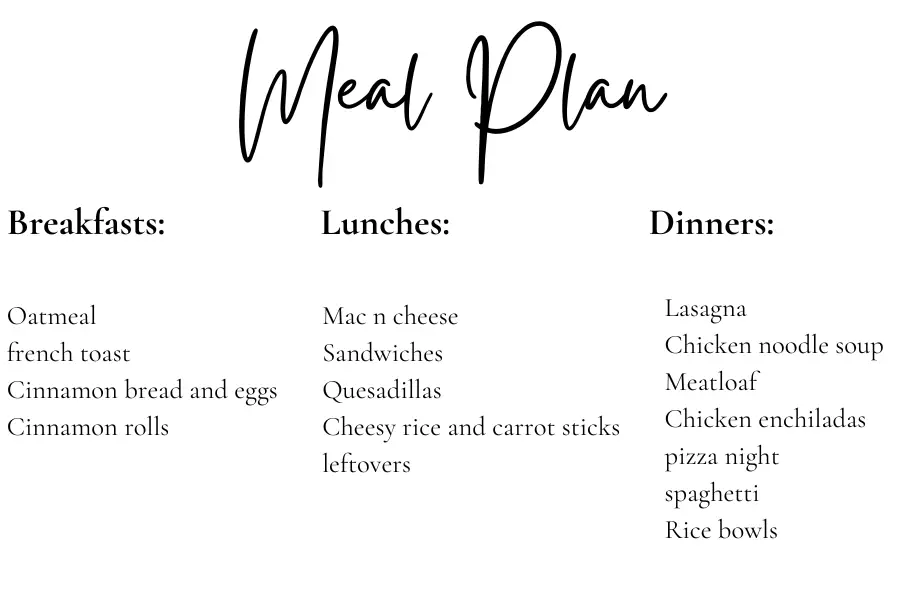
A sample of our weekly menu. Planning ahead has helped us stay on budget.
Meal planning
I can’t stress this tip enough. Before heading into a grocery store, you must plan your meals. Heading into a grocery store without a plan is asking for trouble. Much like going to a grocery store hungry, without planning your meals, you have no direction and are more likely to overspend on items you don’t truly need.
I have a master list of meals we like to rotate through that will make everyone happy. The kids and my husband choose a few from the list, and then I plan our meals. I try to choose meals with similar ingredients because I’ve found that it simplifies my shopping plan, but this doesn’t always happen.
Check the pantry
As tempting as it is to have a fully stocked pantry at all times, it’s not possible for us right now. I would love to have a pantry stocked with a few months of canned and dried goods on hand, but until then, I always check my pantry before ever getting to the grocery store. This helps me prevent overspending and ensures we aren’t wasting food.
Tips for shopping your pantry
I’ve only managed to stick to our goal of $200 a week grocery budget for a family of 8 because I follow these tips!
Check for starch options
Do you have items like rice, pasta, or potatoes on hand? These are the backbone of many of our low-cost meals. Ensuring I have enough for two weeks is crucial to help set me up for success.
Frozen goods
Keeping frozen fruits and veggies on hand to bulk up meals helps us stay on budget and offer variety to our meals. Frozen produce lasts longer than fresh produce, which helps save money in the long run. I still buy fresh produce options for salads and snacks, but I also like having frozen options stocked.
What protein options do you have on hand?
Meat is expensive! Absurdly expensive. I love serving protein with our dinners, but we must be conscious of portions to help stretch our budget. We buy half a cow yearly and keep our deep freezer stocked with grass-finished beef in different cuts. It’s not cheap, but saving up and doing this once a year helps cut back on our monthly expenses. Purchasing it all at once also ensures we aren’t fighting the rising costs every month.
If you have some on hand already, note it so you’re not spending unnecessary money at the grocery store.
Make note of fresh ingredients on hand
I like to check our fresh options last. Fresh fruits and veggies make excellent snacks or sides with a meal. Jot these items down to avoid over-purchasing.
Once you’ve checked these four areas, make your grocery list! Now that you have your meal plan and know what you already have on hand, you can make your shopping list.
Bulk shop
Thank goodness for Costco! Groceries for a family of 8 are not cheap, and bulk shopping has helped tremendously! I’m not talking about five dozen cookies or a gallon of ice cream. I purchase items I use regularly that don’t go bad quickly, and I love it.
Here are some ideas of items I regularly purchase in bulk:
- flour
- rice
- oats
- eggs
- beans
- potatoes
- canned goods
I don’t find it tempting to purchase items that aren’t on my list, but if you do, skip it! I want to encourage you to work through that temptation because it saves us so much money!
Organic vs. non-organic
As much as I wish we could afford to go 100% organic, it’s not in our budget. The things that matter most to me are protein sources, grains as they are sprayed heavily with pesticides, dairy because my kids consume a lot, and produce because, again, a lot of it is sprayed with pesticides.
When shopping for groceries for a family of 8 and trying to save money, I first focus on organic produce and grains. We consume much more of those food groups than any other, so it makes sense to me to focus on them. I always focus on EWG’s Dirty Dozen and Clean Fifteen when shopping for produce. Basically, produce with thicker skin is less likely to contain higher pesticide levels than produce with thin or no skin. Additionally, some produce is more heavily sprayed than others. If you’re interested in learning about these lists, click here!
Reduce protein portions
Some may find this controversial, but I strongly believe that animal protein is good for us. Some fad diets say otherwise, I know. I try to avoid that advice as much as possible, though, and still firmly believe that animal proteins are good for us. However, they are pricey, and a great way to lower your grocery bill is to cut back on your protein portions. Groceries for a family of 8 are expensive enough, and as much as I’d like to serve protein as the main part of our meals, it is not an option right now.
Cut protein portions down
Instead of an entire chicken breast, I filet it, and each filet is a serving, and instead of ½ a cup of ground meat for tacos, we serve ¼ cup for the younger children. Things like this make a huge difference in stretching our budget.
Reduce the amount of cheese used in dishes
I swear my kids would eat a pound of cheese if I let them! They’re obsessed. To save money, I use a portion of what a recipe calls for and cut it back by at least 25%. I have found other ways to add flavor to dishes heavy on cream or cheese, so it’s still flavorful and cost-efficient.
Stretch protein servings with beans and veggies
I like to use beans or shredded veggies like carrots and zucchini for casserole dishes that call for ground beef or turkey. My kids have no idea, and it helps save money. Plus, they get a hidden serving of veggies in their meal!
Another great way to stretch meat is with soups and stir-fries. Two chicken breasts with scrambled eggs, rice, and mixed veggies will feed my entire family for two days.
Make from scratch
I learned how to make all my bread, rolls, and baked goods from scratch this year and have loved the process. I can make three loaves of organic sandwich bread with five ingredients versus 12-15 ingredients in store-bought bread and save money simultaneously!
It’s been a blessing for my family and my mental health to use my hands and learn new skills in the kitchen. Don’t let it overwhelm you! If you try it, you’ll see how easy it can be to learn to make things from scratch and save money.
Simplify your meals
Stop making such elaborate meals! I get it- cooking is an art. One that I love with my whole heart. Grabbing ingredients, mixing them, and creating magic is incredible. But if you want to save money, which is always my goal when purchasing groceries for a family of 8, you’ve got to learn to simplify meals! Be honest, who actually wants to follow a recipe that has you purchase 16 ingredients for one meal? Not me! As much as I love cooking, I’m busy, and my time is valuable. You can still create delicious, filling meals using fewer ingredients.
Watch for sales
Watch your local grocery store for a good deal. Most grocery stores run ads in the newspaper or online announcing the best deals. If you notice a good sale price, stock up on staples you use often in your meals. This goes for non-food items as well. If toilet paper, disposable bags, or other paper products are items you use often, watch for sales to avoid paying full price.
Another way I stretch our food budget is by price-checking items between different stores. Yes, It takes a little more time, but If I can check local stores for a great deal, it’s worth spending a few extra minutes to stretch our family budget.
Final thoughts
Using these tips, I can shop for groceries for a family of 8 and stick to a $ 200-a-week grocery budget. It was an adjustment, but I was willing to adapt to it if it meant I could save money and provide delicious meals. The average family could save thousands per year, contributing that money towards other financial goals. As food costs rise, it’s more important than ever to lower your food bill as much as possible.
Do you have any more money-saving tips that could help someone out? Let me know in the comments below!
This site may contain links to affiliate websites including Amazon. I may receive an affiliate commission for any purchases made by you through Amazon or other potential affiliates and no additional cost to you. Thank you for your support.

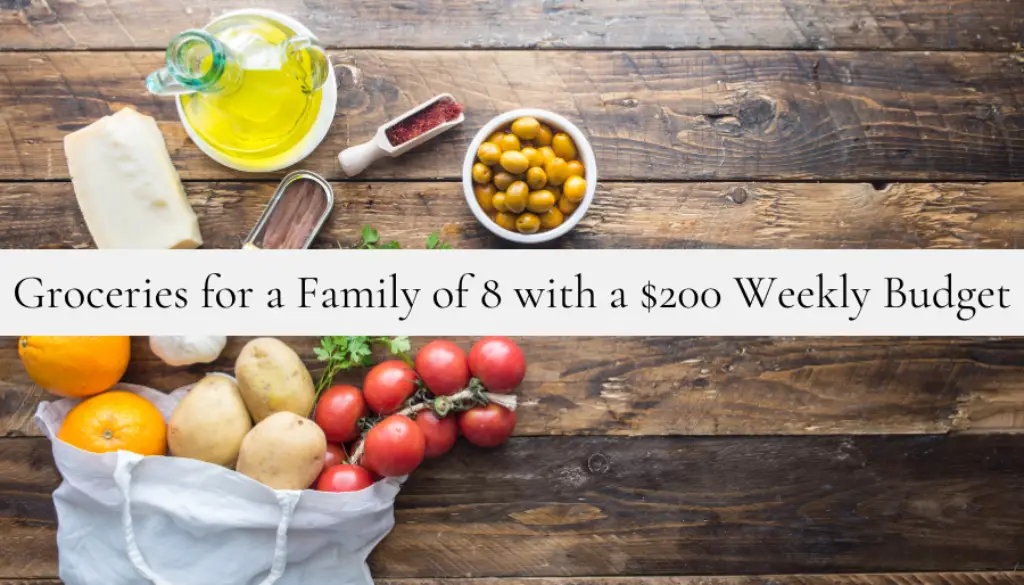

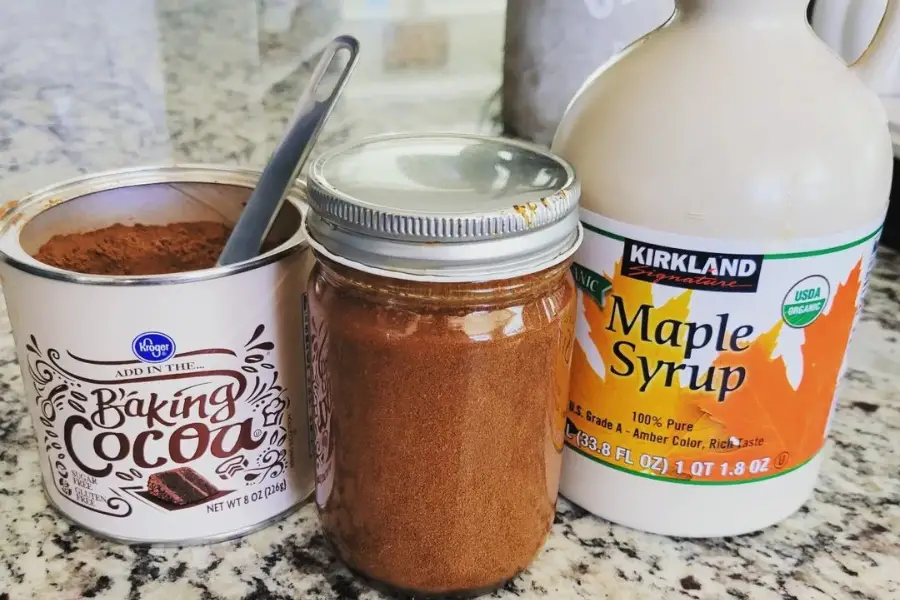
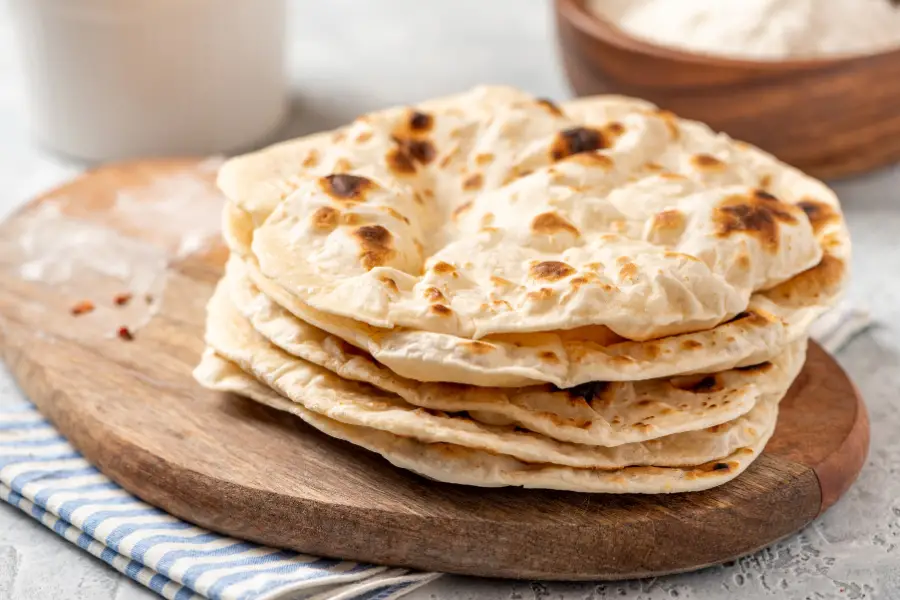

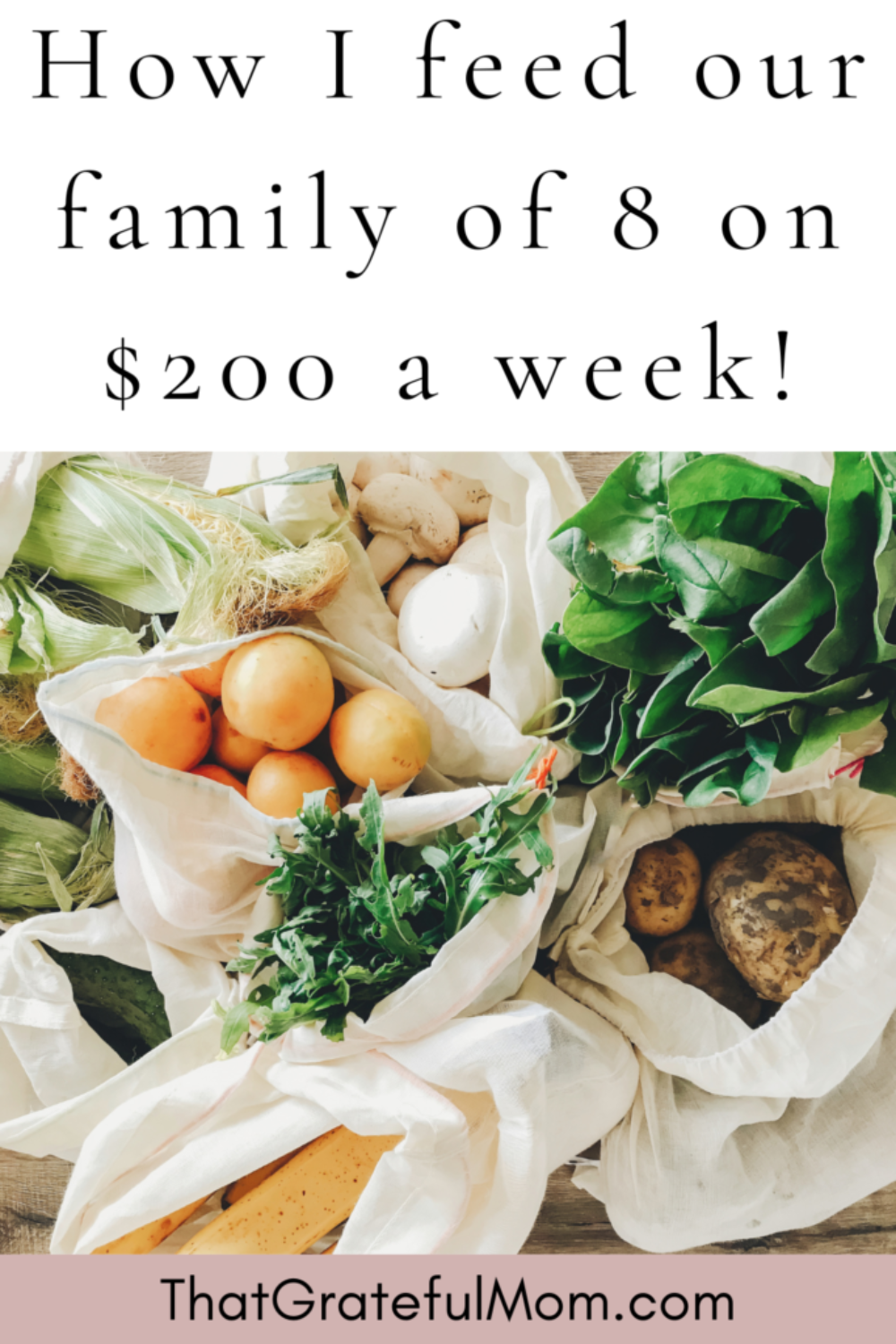


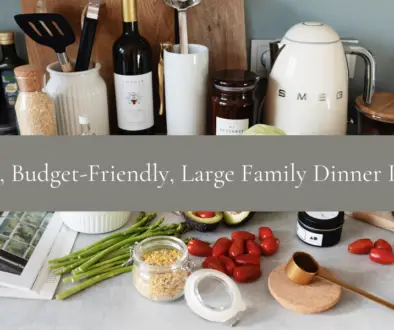

January 12, 2024 @ 5:09 pm
Fantastic tips! I am so glad I found your post. Saving for later.
January 13, 2024 @ 9:29 pm
Thank you so much Joan! I’m glad you found this post helpful.
January 15, 2024 @ 5:23 am
Thank you so much for sharing your tips! These are so great. You don’t see big families as often anymore. It’s beautiful to see!
January 16, 2024 @ 5:10 pm
Hi Sarah!
Thank you so much for your comment. I appreciate your sweet words.